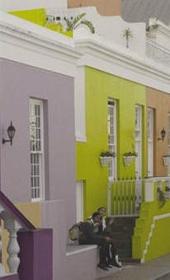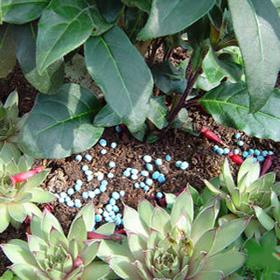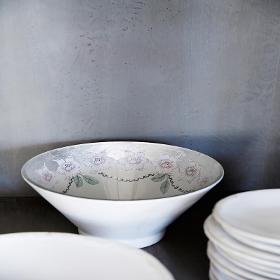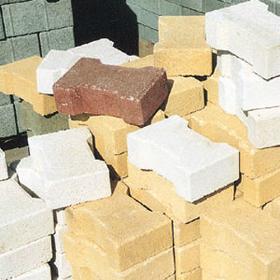- europages
- >
- COMPANIES - SUPPLIERS - SERVICE PROVIDERS
- >
- synthetic fibres
Results for
Synthetic fibres - Import export

JADAM
Portugal
Acetic Acid 50%, 80% and 99% systematically named ethanoic acid, is an acidic, colourless liquid, organic compound with the chemical formula (CH3COOH) Vinegar is at least 4% acetic acid by volume, making acetic acid the main component of vinegar apart from water and trace elements It is an important chemical reagent, used primarily in the production of cellulose acetate for photographic film, polyvinyl acetate for wood glue, and synthetic fibres and fabrics In households, diluted acetic acid is often used in descaling agents In the food industry, it used as an acidity regulator and as a condiment Industries: Household chemicals, Fertilizers Properties: CAS number 64-19-7 WE number 200-580-7 Chemical formula CH3COOH Molar mass 60,05 g/mol Customs tariff code 29152100 ADR UN2789 pH <1 Melting / freezing point -20°C (1013 hPa) Boiling point range 92°C (1013hPa) Relative density 1,057 g/cm3 @25°C Solubility in water 602,9 g/l/ @25°C
Request for a quote
STOOPEN & MEEÛS
Belgium
Plastic, epoxy, polyester, alkyd, quartz floors, roofing, ... NATURAL OXIDES: yellow, red, brown, black SYNTHETIC IJZEROXIDES: yellow, red, brown, black DRAGON PIGMENTS: red, yellow, blue, green, grey CHROME OXIDE GREEN COBALT OXIDE: green, blue CARBON- or PITCH-BLACK MILORI OR PRUSSIAN BLUE CHROME GREEN YELLOW: PY 1, PY 3, ... RED: PR 2, PR 3, ... GREEN: PG 7, PG 8, ... BLUE: PB 15, ... ULTRAMARINE: blue, violet TITANIUM DIOXIDE WHITE A pigment is a substance that has the capacity of colouring a certain carrier (cement, plaster, synthetic fibres, paint, …). Contrary to dyes, pigments are insoluble. Therefore, pigments remain under the form of small particles and will just be dispersed in the carrier and so colouring the carrier. The colouring capacity of the pigment depends on the fineness of the particles composing the pigment. In general we can say that the finer the particles are, the higher the colouring capacity of the pigment will be.
Request for a quote
STOOPEN & MEEÛS
Belgium
Oil paint, watercontaining paint, mineral paint, synthetic paint, ... ZINC WHITE NATURAL OXIDES: yellow, red, brown, black SYNTHETIC IJZEROXIDES: yellow, red, brown, black DRAGON PIGMENTS: red, yellow, blue, green, grey CHROME LEAD/ LEAD CHROMATE: yellow, orange MOLYBDATE ORANGE CADMIUM SULPHIDE: yellow, orange, red CHROME OXIDE GREEN CHROMATE GREEN COBALTOXIDE: green, blue ULTRAMARINE: blue, violet MILORI OR PRUSSIAN BLUE CARBON- or PITCH-BLACK IVORY OR BONE BLACK CHROMATE GREEN YELLOW: PY 1, PY 3, ... RED: PR 2, PR 3, ... GREEN: PG 7, PG 8, ... BLUE: PB 15, TITANIUM DIOXIDE WHITE A pigment is a substance that has the capacity of colouring a certain carrier (cement, plaster, synthetic fibres, paint, …). Contrary to dyes, pigments are insoluble. Therefore, pigments remain under the form of small particles and will just be dispersed in the carrier and so colouring the carrier.
Request for a quote
STOOPEN & MEEÛS
Belgium
Liquid and powdered fertilizers, sowing seed NATURAL OXIDES: yellow, red, brown, black BISTER SYNTHETIC IRON OXIDES: yellow, red, brown, black DRAGON PIGMENTS: red, yellow, blue, green, grey A pigment is a substance that has the capacity of colouring a certain carrier (cement, plaster, synthetic fibres, paint, …). Contrary to dyes, pigments are insoluble. Therefore, pigments remain under the form of small particles and will just be dispersed in the carrier and so colouring the carrier. The colouring capacity of the pigment depends on the fineness of the particles composing the pigment. In general we can say that the finer the particles are, the higher the colouring capacity of the pigment will be. A pigment is only suitable for certain applications. The pigment shouldn’t react with the carrier. Moreover, the pigment shouldn’t oxidize under influence of oxygen in the air and shouldn’t lose its colour under influence of sunlight (UV).
Request for a quote
STOOPEN & MEEÛS
Belgium
Murals, stucco, decorative elements, mineral paints, ... NATURAL OXIDES: yellow, red, brown, black SYNTHETIC IRON OXIDES: yellow, red, brown, black DRAGON PIGMENTS: red, yellow, blue, green, grey CHROME OXIDE GREEN COBALTOXIDE: green, blue CARBON- or PITCH-BLACK (limited) ULTRAMARINE: blue, violet TITANIUMDIOXIDE WHITE A pigment is a substance that has the capacity of colouring a certain carrier (cement, plaster, synthetic fibres, paint, …). Contrary to dyes, pigments are insoluble. Therefore, pigments remain under the form of small particles and will just be dispersed in the carrier and so colouring the carrier. The colouring capacity of the pigment depends on the fineness of the particles composing the pigment. In general we can say that the finer the particles are, the higher the colouring capacity of the pigment will be. A pigment is only suitable for certain applications. The pigment shouldn’t react with the carrier.
Request for a quote
STOOPEN & MEEÛS
Belgium
Industry floors, concrete block-systems, plant pots, bicycle paths, clinkers, tiles, flags, joint wet mortar, cement adhesive, mineral paints,… NATURAL OXIDES: yellow, red, brown, black SYNTHETIC IRON OXIDES: yellow, red, brown, black DRAGON PIGMENTS: blue, green, grey CHROME OXIDE GREEN COBALTOXIDE BLUE CARBON- or PITCH-BLACK (limited) TITANIUM DIOXIDE WHITE A pigment is a substance that has the capacity of colouring a certain carrier (cement, plaster, synthetic fibres, paint, …). Contrary to dyes, pigments are insoluble. Therefore, pigments remain under the form of small particles and will just be dispersed in the carrier and so colouring the carrier. The colouring capacity of the pigment depends on the fineness of the particles composing the pigment. In general we can say that the finer the particles are, the higher the colouring capacity of the pigment will be. A pigment is only suitable for certain applications. The pigment shouldn’t react with the carrier.
Request for a quoteDo you sell or make similar products?
Sign up to europages and have your products listed
Results for
Synthetic fibres - Import exportNumber of results
6 ProductsCountries
Company type